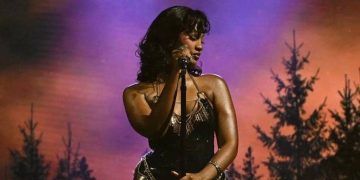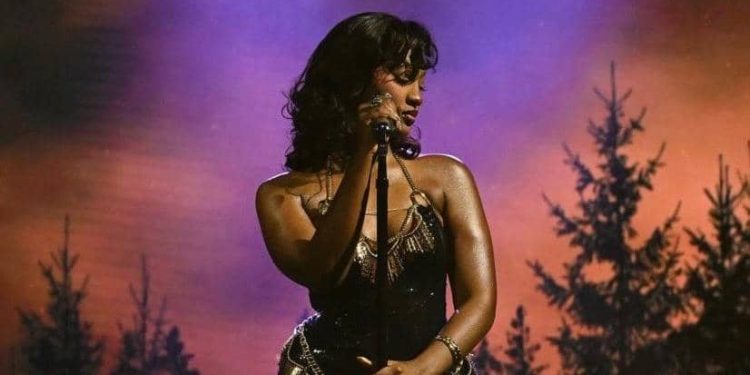Spotify has launched Afrobeats: Culture in Motion, a major global project that chronicles the genre’s massive growth over the past five years and spotlights the artists driving its direction.
The initiative comes as Afrobeats solidifies its status as a global cultural force, generating over 240 million discoveries on the streaming service worldwide in the last year alone.
On November 14, 2023, at London’s O2 Arena, Rema staged an unforgettable moment. Riding onto the stage on a black horse prop, draped in a flowing cape and wearing a mask symbolising Queen Idia, he paid tribute to his Benin heritage.
The powerful imagery was more than performance—it was cultural storytelling on a global stage, pushing Afrobeats into new territory where visuals matter as much as sound.
That night captured a larger shift. Over the past five years, Afrobeats has transformed from a music genre into a global cultural movement, with artists using visual art, fashion, and storytelling to reframe how the world sees Africa.
Cinematic storytelling as cultural expression
Today’s Afrobeats artists harness filmic techniques to amplify their narratives. Cruel Santino’s videos unfold like short films, steeped in folklore and Nollywood-inspired horror and action aesthetics, offering a window into contemporary Nigerian youth culture.
Yemi Alade, by contrast, embraces vibrant theatricality. In “Deceive” and “Shekere” (featuring the legendary Angelique Kidjo), she fuses Nollywood drama with bold displays of African spirituality, weaving hairstyles, body paint, and fabric into striking visual testaments of heritage and feminine power.
Emerging artists like Kold AF bring intimacy to the movement. Her “Manyana” video, marked by minimalist styling and scenes of communal hair-braiding, reflects both personal identity and everyday Delta traditions. For her, visuals are inseparable from selfhood: “My aesthetic isn’t curated, it’s what I love, from my dark colours to my dreadlocks, which I see as my crown.”
Fashion as identity and influence
Afrobeats’ reach now extends firmly into global fashion. Where once African artists were absent from elite style spaces, today they are defining them. Tems’s viral Oscars gown, Burna Boy’s Burberry Met Gala look, and Asake’s Paris Fashion Week appearances signal an era where African fashion isn’t merely represented—it’s reshaping global style codes.
Fashion has become a language of identity. Odumodublvck’s signature red Igbo hat (okpu agu) symbolises bravery and tradition, urging young fans to embrace cultural pride. Asake’s flamboyant visuals, from pink agbadas to tailored high-fashion fits, mix indigenous Nigerian aesthetics with avant-garde sensibilities, crafting a rebellious yet rooted identity.
A platform for African creatives
For stylists like Swazzi, fashion is inseparable from Afrobeats’ storytelling. “Music can’t exist without fashion,” he says. Championing made-in-Africa designs, he insists, is key to presenting authentic narratives to the world. This synergy has created global opportunities for African designers, with collaborations such as Burna Boy’s Tokyo James tour costumes or Davido’s move into fully realised clothing collections.
Afrobeats has outgrown its early associations with bling and flash. Today, its artists are architects of a new cultural narrative, using deliberate visuals, innovative fashion, and cross-industry partnerships to broadcast the richness and complexity of African identity.









